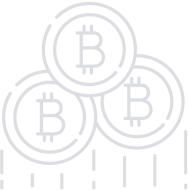
Ultiledger - The next generation global self-financing blockchain protocol
Ultiledger aims to help any organization (Contains government, business, industry clusters or individuals and communities) that needs to build trust through a new generation of blockchain protocols at a low cost and rapid construction of a distributed financial book of bank-grade security; zero-cost transaction settlement within the ecosystem; improved security, privacy, efficiency and capital availability of the system through the combination of the main chain and sub-chains. Any tangible assets or intangible rights can be issued into digital assets on Ultiledger, completing functions such as confirmation, notarization, trading, circulation, etc., and finally achieving “credit circulation, asset circulation, value circulation”.Implementation and application is the biggest feature of UltiLedger. The project technical team consists of five blockchain technology geeks with more than 12 years of IT development experience, including Wanxiang Group, HKEX,Ant Financial and SAP.
STO/ICO Status
Claim this listing and publish updates.
Basics
| Platform | N/A |
|---|---|
| Type | N/A |
| Accepting | Others |
| Circulating Supply | N/A |
| KYC | N/A |
| Restricted Areas | N/A |
| Homepage | Website URL |
| White Paper | View/Download |
About
Using the blockchain technology, Ultiledger wishes to establish an economic and financial ecosystem based on ULT Native Tokens to help any organization set up trust mechanisms at a low cost and time capital: distributed financial book of bank-grade security; zero-cost transaction settlement within the ecosystem; improved security, privacy, efficiency and capital availability of the system through the combination of the main chain and subchains. Our clients can include governments, companies, industry clusters, and even individuals or communities. In the Ultiledger ecosystem, users can register assets that they consider valuable in a code string on the blockchain for asset tokenization, and then perform transactions using the tokenized assets via smart contracts and open storage. Any digital or physical asset can be provided permanent storage and real-time tracking on the public chain, and ultimately allowing the interexchange between assets and value on a trusted basis. We hope to build a safer blockchain platform with a more open design and a lower cost, resulting in a more enjoyable experience. At the same time, the platform will respond to the supervision of governments, allowing the blockchain technology to seamlessly integrate with the real economy.
The blockchain technology will reshape the next generation of the Internet and distribute profits of the consensus economy. The Internet today is a “traffic ranch” where all users and companies are like cattle and sheep subject to ruling of corporate giants. A ride-hailing platform, as the largest of its kind in China, has greatly raised the percentage cut from ride fair or reduced subsidies to the driver on the one hand, and has direct-or-indirectly increased the price to passengers on the other. The distortion in charges and the cuts, as well as the unfair distribution mechanism, caused the drivers to put off orders from time to time, leaving passengers without available rides.
On the contrary, a "distributed" consensus mechanism promoted by the blockchain is the ultimate weapon to break away from this monopoly mechanism for fair and equitable distribution. Since the distribution mechanism is based on consensus and approved by each participating entity, and the information is completely open, transparent and tamper-proof, participants can enjoy the rewards and rights they are entitled to.
As an early application of the blockchain technology, the success stories of Bitcoin and Ethereum attest to the infinite possibilities the technology. However, due to the current underlying transmission mechanism, computational performance and architectural constraints of the consensus algorithm, the existing public chains are facing the bottleneck of transaction processing. Both Bitcoin and Ethereum's System Throughput (TPS) are still in single digits or tens digits, which makes it impossible to carry actual trading scenarios. In actual economic activities, the required TPS often needs to reach thousands of transactions per second. With traditional e-commerce platforms, payments and exchanges, the actual transaction demand often reaches tens of thousands of times per second. Ultiledger is designed through a multi-chain system which allows for overall faster transaction processing speed. The main chain adopts the Federated Byzantine Agreement, imposing thresholds on minimum data volume, minimum calculation amount and minimum network bandwidth. The subchains facilitate quicker consensus through fewer nodes.
The Ultiledger team has many years of practical exploration experience, and successful developed multiple applications based on subchains of breakthrough innovations in the early days. With the expansion of the blockchain sector, it is observed that applications only achieving self-financing within the subchains, cannot satisfy the need for circulation of credit, assets and value. However, the financial scene is often complicated with an increasing amount of assets and fast-growing demand for interaction. To this end, the ground-breaking and interactive blockchain framework, ultimate ledger project (Ultiledger), is proposed as a blockchain solution that meets the needs of real business applications. The project aims to deploy a new generation of self-financial public chain to meet the financial needs of different scenarios on one hand, and to map and combine assets that require circulation on the other, supporting their circulation on a global scale.